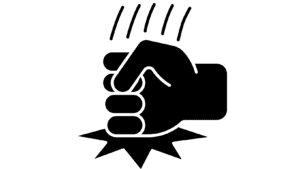Objection: Need to Compare Prices with Competitor
The presentation is completed. It went well. Very well. You are ready to close. Then, the following conversation occurs:
Salesperson: “Is there anything else you want to ask?”
Customer: (the client taps a pencil against a yellow pad. Glances down through the notes and taps again and shakes their head no.)
Salesperson: “Do you need me to run over the implementation timeline again?”
Customer: “No thanks.” (tap tap tap)
Salesperson: “Any questions concerning the benefits of the services?”
Customer: looks up and says, “Thanks very much for the presentation. I’ve got another contractor coming in next week. I’ll see what they’re offering. I’ll let you know.”
What is frustrating about this objection is that it seems OK to do some comparison shopping. It seems responsible for a decision maker to check the prices available from different contractors before making an informed and responsible decision.
You must find out if this objection is genuine or if it is a stall to get you out the door.
How did the client react to the presentation? What to look for:
- Are they frequently glancing at their watches or a clock in the room (or mobile phone)?

- Are their arms or legs crossed (an important body language signal that generally indicates resistance to what’s being said)?
- Are they making any repetitive movements – tapping pen, playing with paper clips?
- Are they shifting in their seats and/or clearing their throats more than necessary?
Some or all these reactions indicate that your client is bored, inattentive, or looking for a way out of the room and back to more important business.
When this type of objection is raised, you will not obtain an immediate decision. There is no point in pursuing it. The most important action you can do is to continue the conversation – Just not right now:
- Don’t argue. Accept that the meeting is over. Start making the motions of ending the meeting. Pack up your bag. Don’t do it in silence. Talk. (If you don’t talk, you look like you are sulking). This action is a physical way of acknowledging that the client has ended the meeting, and you respect them.

- Get a commitment for the next meeting. Say something along the lines of, “I completely understand that you want to have all the information before deciding. Would next Wednesday at 10:AM be a good time for us to continue this discussion?”
- Stay in touch. During the interval between the end of this meeting to the next, construct a piece of sales material that lays out your product or service next to its most significant competition.
| Client Personality | Client Attitude | Sales Tactic |
|
Dominant
|
|
|
|
Influence
|
|
|
|
Steadiness
|
|
|
|
Conscientious
|
|
|









